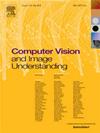A method for absolute pose regression based on cascaded attention modules
IF 3.5
3区 计算机科学
Q2 COMPUTER SCIENCE, ARTIFICIAL INTELLIGENCE
引用次数: 0
Abstract
The absolute camera pose regression estimates the position and orientation of the camera solely based on captured RGB images. However, current single-image techniques often lack robustness, resulting in significant outliers. To address the issues of pose regressors in repetitive textures and dynamic blur scenarios, this paper proposes an absolute pose regression method based on cascaded attention modules. This network integrates global and local information through cascaded attention modules and then employs a dual-stream attention module to reduce the impact of dynamic objects and lighting changes on localization performance by constructing dual-channel dependencies. Specifically, the cascaded attention modules guide the model to focus on the relationships between global and local features and establish long-range channel dependencies, enabling the network to learn richer multi-scale feature representations. Additionally, a dual-stream attention module is introduced to further enhance feature representation by closely associating spatial and channel dimensions. This method is evaluated and analyzed on various indoor and outdoor datasets, with our method reducing the median position error and orientation error to 0.19 m/ on 7-Scenes and 7.09 m/ on RobotCar, demonstrating that the proposed method can significantly improve localization performance. Ablation studies on multiple categories further verify the effectiveness of the proposed modules.
基于级联注意模块的绝对姿态回归方法
绝对相机姿态回归仅基于捕获的RGB图像估计相机的位置和方向。然而,目前的单图像技术往往缺乏鲁棒性,导致显著的异常值。针对重复纹理和动态模糊场景下的姿态回归问题,提出了一种基于级联注意模块的绝对姿态回归方法。该网络通过级联关注模块整合全局和局部信息,然后采用双流关注模块,通过构建双通道依赖关系来降低动态对象和光照变化对定位性能的影响。具体而言,级联关注模块引导模型关注全局和局部特征之间的关系,建立远程通道依赖关系,使网络能够学习更丰富的多尺度特征表示。此外,引入了双流注意模块,通过密切关联空间和通道维度来进一步增强特征表示。在不同的室内和室外数据集上对该方法进行了评估和分析,我们的方法将位置误差和方向误差的中值在7-Scenes上降低到0.19 m/7.44°,在RobotCar上降低到7.09 m/1.45°,表明该方法可以显著提高定位性能。对多个类别的烧蚀研究进一步验证了所提出模块的有效性。
本文章由计算机程序翻译,如有差异,请以英文原文为准。
求助全文
约1分钟内获得全文
求助全文
来源期刊

Computer Vision and Image Understanding
工程技术-工程:电子与电气
CiteScore
7.80
自引率
4.40%
发文量
112
审稿时长
79 days
期刊介绍:
The central focus of this journal is the computer analysis of pictorial information. Computer Vision and Image Understanding publishes papers covering all aspects of image analysis from the low-level, iconic processes of early vision to the high-level, symbolic processes of recognition and interpretation. A wide range of topics in the image understanding area is covered, including papers offering insights that differ from predominant views.
Research Areas Include:
• Theory
• Early vision
• Data structures and representations
• Shape
• Range
• Motion
• Matching and recognition
• Architecture and languages
• Vision systems
 求助内容:
求助内容: 应助结果提醒方式:
应助结果提醒方式:


